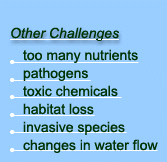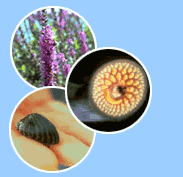
Invasive Species
Sometimes plants and animals that don't grow naturally in an area, also known as “invasive species,” can end up in estuaries—either accidentally or intentionally. This can drive out “native” plants and animals; destroy the surrounding habitat; interfere with people who are trying to boat, fish, or swim there; and introduce pathogens into the environment.
Invasive species can spread quickly because they have no natural predators or little competition from other species. Examples include oyster drills, Chinese mitten crabs, and Brazilian pepper trees. These and other invasive species often wind up in estuaries as accidental passengers on ships. Sometimes fish or plants are imported into the country to be sold in aquariums, raised in nurseries, or used in ornamental landscaping but make their way into estuaries by accident.



